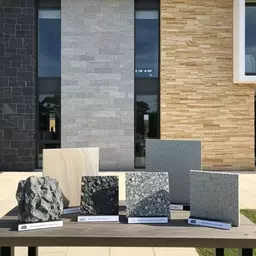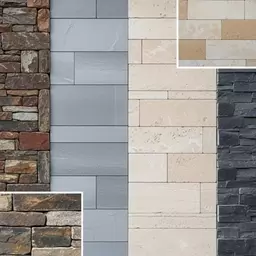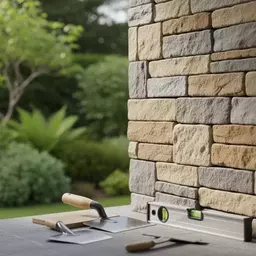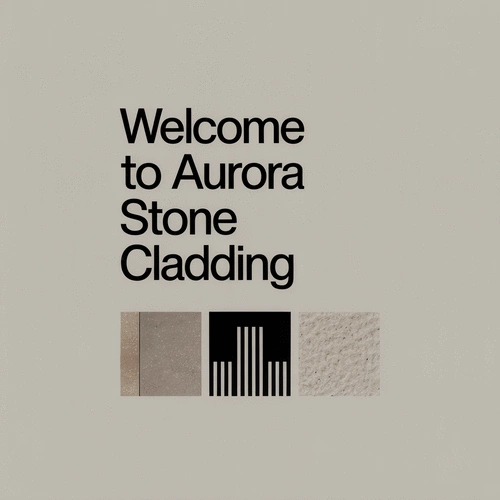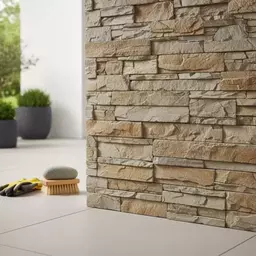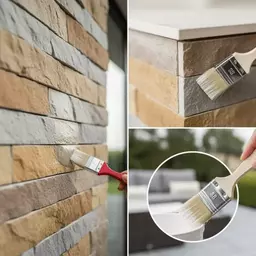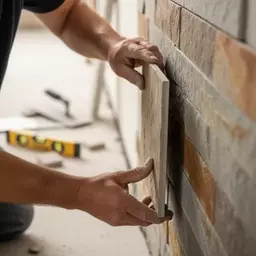When choosing the right materials for your architectural project, understanding the distinction between natural stone cladding and engineered stone veneers can significantly impact your design and durability outcomes. Let's explore the key insights that will guide you in making an informed decision.
What You Will Learn
- Natural stone cladding, like granite and limestone, offers unique characteristics suitable for various applications, enhancing aesthetic appeal and durability.
- Engineered stone veneers provide consistent quality with a range of colors and patterns, making them versatile and often more cost-effective than natural stone.
- Understanding the environmental conditions of your project can influence whether natural or engineered stone is the better choice for durability and maintenance needs.
- Consider both initial investment and long-term value when selecting materials, as natural stone typically has a higher upfront cost but may enhance longevity and aesthetic value.
Natural Stone vs. Engineered Stone: Key Differences
This visual highlights the main distinctions between Natural Stone Cladding and Engineered Stone Veneers across critical aspects like Durability, Aesthetics, Maintenance, and Cost-Effectiveness.
Durability
Natural Stone: Superior longevity, excellent thermal performance for outdoors.
Engineered Stone: Consistent quality, superior moisture resistance.
Aesthetic Appeal
Natural Stone: Timeless, organic beauty, unique patterns and hues.
Engineered Stone: Broader range of colors/patterns, design flexibility.
Maintenance
Natural Stone: Requires regular sealing for protection.
Engineered Stone: Less upkeep, non-porous surface, occasional cleaning.
Cost-Effectiveness
Natural Stone: Higher initial investment due to extraction/installation.
Engineered Stone: More cost-effective solutions, good long-term value.
Understanding Natural Stone Cladding and Engineered Stone Veneers
When it comes to selecting materials for your next architectural project, understanding the differences between natural stone cladding and engineered stone veneers is crucial. Each option brings its unique characteristics and advantages, making them suitable for various applications. At Aurora Stone Cladding, we often guide homeowners, builders, and architects through this decision-making process, ensuring they find the perfect fit for their vision and needs!
Defining Natural Stone Cladding and Its Characteristics
Natural stone cladding offers a timeless appeal, showcasing the beauty of materials like granite, limestone, and sandstone. Each type has its own unique qualities:
- Granite: Known for its strength and durability, granite is an excellent choice for high-traffic areas.
- Limestone: This softer stone boasts a warm, earthy hue and is often used in both interior and exterior applications.
- Sandstone: With its rich color variations and textures, sandstone adds a layer of elegance to any design.
Natural stone cladding not only enhances the aesthetic appeal of a space but also provides long-lasting durability. However, the selection process can be overwhelming—knowing the characteristics of each type helps narrow down your choices! For further information on stone preservation, you can refer to the National Park Service's guidelines on preserving historic stone.
Defining Engineered Stone Veneers and Their Features
On the other hand, engineered stone veneers are crafted from a blend of natural stone and synthetic materials, such as quartz. This manufacturing process allows for a range of colors and patterns that mimic the look of natural stone while maintaining consistency and reliability.
- Quartz: A popular choice due to its non-porous nature, quartz is resistant to stains and scratches, making it ideal for busy households.
- Recycled materials: Many engineered stone options incorporate recycled content, which can contribute to sustainable building practices.
Engineered stone veneers offer versatility in design while often being more cost-effective than their natural counterparts. As someone deeply invested in sustainable practices, I appreciate how these materials can beautifully complement modern architectural designs without sacrificing quality! You can learn more about stone veneer installation and maintenance from Iowa State University Extension and Outreach.
Comparative Analysis of Natural Stone and Engineered Stone
Durability: Natural Stone vs. Engineered Stone
When evaluating the durability of natural stone cladding versus engineered stone, several factors come into play. Both materials can withstand various environmental conditions, but there are nuances:
- Natural stone: Typically excels in thermal performance, making it ideal for outdoor applications.
- Engineered stone: Offers superior resistance to moisture, which is essential in areas prone to humidity.
Understanding the specific needs of your project can help determine the best material based on the environment it will face. At Aurora Stone Cladding, we recommend considering your local climate to guide your selection process!
Aesthetic Appeal: Visual Differences and Design Flexibility
Both natural stone and engineered stone provide stunning visual appeal, but they differ noticeably in their aesthetic qualities:
- Color variations: Natural stone boasts unique patterns and hues, making each piece one-of-a-kind.
- Design options: Engineered stone allows for a broader range of colors and finishes, thanks to its manufacturing process.
This diversity in aesthetics means that whether you’re envisioning a rustic or contemporary look, there’s a stone solution for you! I often encourage clients to consider how these visual elements will harmonize with the overall design of their space.
Maintenance Needs: Long-Term Care for Both Types
Maintenance is a vital consideration when choosing between natural stone cladding and engineered stone veneers. Here’s a comparison:
- Natural stone: Requires regular sealing to maintain its protective barrier against water and stains.
- Engineered stone: Generally requires less maintenance due to its non-porous surface, but still benefits from occasional cleaning.
Implementing a solid maintenance plan not only preserves the beauty of your stone but also enhances its longevity. I always recommend discussing care routines with your contractor to ensure you’re fully prepared for the long haul!
Cost-Effectiveness: Analyzing Initial Investment and Longevity
Cost is a significant factor when it comes to making your material choice. Let’s break down the financial aspects:
- Initial investment: Natural stone often requires a higher upfront cost due to its labor-intensive extraction and installation process.
- Long-term value: Engineered stone veneers can offer more cost-effective solutions without compromising on style or performance.
In the context of the Australian market, it’s essential to weigh these factors against the expected longevity and aesthetic value of the materials you choose. I’ve seen firsthand how proper investment in quality materials pays off in beauty and durability! For an in-depth look at stone cladding applications, refer to this article on stone cladding from ASM International.
I couldn't find a specific YouTube video titled "Natural Stone Cladding vs. Engineered Stone Veneers: Key Differences and Best Uses in Australia" that meets your criteria. However, I did find a video titled "Episode 8 — Natural Stone vs Engineered Stone," which discusses differences between natural and engineered stone, though it might not specifically focus on cladding or veneers in Australia. Unfortunately, without a direct match, I cannot provide the embed code for your specific title. If you'd like, I can offer general advice on finding a suitable video or suggest alternatives based on available content. If you're interested in using the video I found, here's how you might embed it, assuming it's suitable for your needs:Please ensure the video meets your specific needs before embedding it.
We Want to Hear From You!
As you consider your options between natural stone cladding and engineered stone veneers, what is your top priority? Is it durability, aesthetic appeal, or cost-effectiveness? Share your thoughts below:
Frequently Asked Questions (FAQs)
Summary of Key Differences and Considerations
As we wrap up our exploration of natural stone cladding and engineered stone veneers, it’s crucial to understand their key differences. Both materials have unique characteristics that can dramatically influence your project's outcome. Below is a summary of the major distinctions to consider:
- Durability: Natural stone typically offers superior longevity and resistance to the elements, while engineered stone provides a consistent quality that can be tailored.
- Aesthetic Appeal: Natural stone brings a timeless, organic beauty, whereas engineered stone allows for a broader range of colors and patterns, enhancing design flexibility.
- Maintenance: While natural stone requires regular sealing and care, engineered stone often demands less upkeep, especially in areas prone to staining.
- Cost: Initial investment can vary significantly, with natural stone often having a higher upfront cost, but engineered stone may provide a cost-effective solution in the long run when considering durability and maintenance.
By weighing these factors, you can make an informed decision that aligns with your vision and practical needs. It’s all about finding the right balance that suits your project's goals!
Making the Right Choice for Your Project
When it comes to choosing between natural stone and engineered stone, I encourage you to think deeply about your specific project requirements. Are you leaning towards a classic aesthetic or a more modern look? Is durability your top priority, or are you more concerned about cost-effectiveness? These are essential questions to consider!
Consulting with experienced architects and designers can provide you with the necessary insights tailored to your unique situation. Their expertise can help guide you towards the most suitable material, ensuring that your choice not only meets your aesthetic desires but also aligns with practical needs.
Engaging with Suppliers and Getting More Information
As you embark on this exciting journey, reaching out to regional suppliers can be a game-changer! I recommend that you ask for samples, quotes, and additional information on both natural stone cladding and engineered stone veneers. This will give you a tangible feel for each material, helping you visualize how it will work in your project.
- Request samples to assess color and texture.
- Compare quotes to understand the financial implications.
- Seek product reviews and industry standards to gauge quality.
Engaging with suppliers not only clarifies your options but also opens the door to discovering innovative solutions that can elevate your project to the next level. At Aurora Stone Cladding, we are here to assist you every step of the way—so don't hesitate to reach out!
Recap of Key Points
Here is a quick recap of the important points discussed in the article:
- Understanding Material Choices: Natural stone cladding offers unique aesthetics and durability, while engineered stone veneers provide versatility and cost-effectiveness.
- Durability Comparison: Natural stone excels in thermal performance, while engineered stone is more moisture-resistant.
- Aesthetics: Natural stone features one-of-a-kind patterns; engineered stone allows for a broader color range and design flexibility.
- Maintenance Needs: Regular sealing is required for natural stone, whereas engineered stone is typically lower maintenance.
- Cost Considerations: Natural stone may have a higher initial cost, but engineered stone can be more cost-effective over time due to lower maintenance needs.


